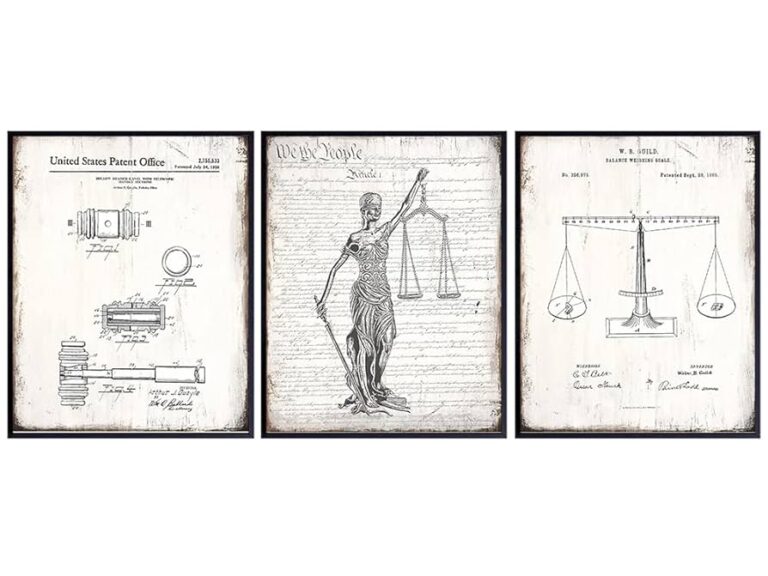Introduction to Patent Drawings and Specifications
When filing a patent, inventors must provide clear and detailed documentation of their invention. This documentation comes in the form of patent drawings and specifications, both of which play a crucial role in determining whether an application gets approved. A well-prepared patent application ensures that an invention is fully understood and adequately protected.
Understanding the importance of patent drawings and specifications can help inventors navigate the complex patent process and increase their chances of securing strong intellectual property rights. Whether you’re an independent inventor or working with a patent attorney, knowing how to properly document your invention is essential.
The Purpose of Patent Drawings
Patent drawings serve as visual representations of an invention, supplementing the written description provided in the specification. They are especially useful for illustrating complex mechanical structures, processes, and design elements that may be difficult to explain in words alone.
Why Are Patent Drawings Important?
- Strengthen Patent Claims: The claims are critical because they define the patent coverage. The drawings provide context that informs the interpretation of the claims.
- Clarify the Invention: Drawings help patent examiners and potential investors understand the details of an invention more easily. They can show how components interact, demonstrating the invention’s functionality in ways that text alone cannot.
- Meet Legal Requirements: Patent law requires description of the invention that justifies the claims, and some countries require drawings to pass patent examination.
Understanding Patent Specifications
While drawings provide a visual representation, patent specifications form the written foundation of a patent application. They explain the invention in precise detail, outlining what it does, how it works, and why it is novel.
Key Components of a Patent Specification
A complete patent specification consists of several critical sections, each serving a specific purpose:
1. Title of the Invention – A brief, clear title that accurately describes the invention.
2. Field of the Invention – A concise statement of the general area of technology to which the invention belongs.
3. Background of the Invention – A discussion of any relevant background which often includes an outline of the problem the invention aims to solve and references existing solutions.
4. Summary of the Invention – A set of ‘statements of invention’ which usually have rather technical wording closely based on the wording of the claims.
5. Brief Description of the Drawings – A very brief description of each of the drawings, e.g. ‘Figure 1 is a perspective view of rockdrill’.
6. Detailed Description of the Embodiments – A detailed discussion of examples of the invention usually including reference numbers corresponding to labels in the patent drawings.
7. Claims – The claims are the critical section. The claims define the legal boundaries of the invention, specifying what is protected by the patent.
Each of these elements plays a role in making sure the patent application is complete, clear, and legally enforceable.
Writing Effective Patent Specifications
Crafting a well-structured patent specification is essential to securing a strong patent. Here are some best practices to follow:
· Use Clear and Concise Language
Patent examiners and legal professionals must be able to understand the invention without ambiguity. Avoid vague language and ensure technical terms are well-defined.
· Provide Comprehensive Details
The specification should describe the invention thoroughly, leaving no room for misinterpretation. If any aspect is unclear or incomplete, it could weaken the patent’s enforceability.
· Ensure Consistency Between Drawings and Text
The written description should align with the patent drawings, ensuring that all parts, labels and references match accurately. Inconsistencies can lead to delays or rejections.
· Work With a Patent Attorney
Since patent specifications define the legal scope of protection, working with a patent attorney can help ensure the claims are properly drafted and meet all legal requirements.
Common Mistakes to Avoid
Filing a patent application is a detailed process, and mistakes can result in delays, rejections, or weaker protection. Here are some common errors to watch out for:
1. Insufficient Detail
Providing vague descriptions or incomplete information can make it difficult for examiners to understand the invention. This can result in additional scrutiny or rejection.
2. Inconsistent Terminology
Using different names for the same component throughout the specification can create confusion and weaken the patent’s enforceability. Consistency is key.
3. Failure to Distinguish the Invention from Prior Art
A strong patent application clearly explains how an invention differs from existing technology. If this is not well articulated, the patent may be denied.
4. Ignoring Formal Requirements
Patent offices have strict rules regarding formatting, margins, and labelling. Failing to meet these requirements can cause unnecessary delays.
5. Weak Patent Claims
Since the claims define the legal scope of the patent, poorly written claims can leave an invention vulnerable to competitors. Properly structuring the claims is essential for strong protection.
Strengthening Your Patent Application
To maximise the chances of obtaining a strong patent, it’s important to invest in a well-drafted specification. Here are some key steps to take:
Search for relevant pre-existing technology: The search results help to identify the key features that differentiate your invention so that the initial claims can better target those key features.
Work With a Patent Attorney: A patent attorney can help draft claims that provide the broadest possible protection while maintaining compliance with patent laws.
·Review and Revise Before Submission: Carefully reviewing the patent application can prevent costly errors and delays.
Hire a Professional Draftsman: Patent drawings must meet specific technical standards, and a professional can ensure they comply with regulations.
Final Thoughts
The patent specification and the patent drawings are the backbone of any successful patent application. They ensure that an invention is clearly understood, legally protected, and enforceable against competitors. A well-drafted specification improves the chances of approval, means the claims can validly cover more, and can reduce cost by simplifying the patent examination process. Investing in a quality specification is a crucial step toward safeguarding technical innovation against imitation.

